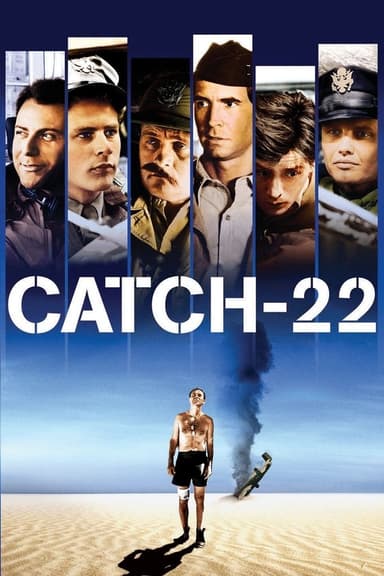
Fail Safe
1964 • Drama, Thriller, War • NR
Because of a technical defect an American bomber team mistakenly orders the destruction of Moscow. The President of the United States has but little time to prevent an atomic catastrophe from occurring.
Runtime: 1h 52m
Why you should read the novel
If you enjoyed the intense drama of the Fail Safe (1964) film, reading the original novel 'Fail-Safe' by Eugene Burdick and Harvey Wheeler offers even deeper insight and detail. The book provides a richer exploration of the psychological tensions and political ambiguities faced by world leaders during a nuclear crisis, giving readers a front-row seat to the weighty decisions and inner conflicts that define the narrative. Engaging with the novel allows you to immerse yourself in the intricate thought processes and ethical dilemmas that cannot be fully captured on screen, making it a must-read for fans of political thrillers or Cold War history.
Choosing to read 'Fail-Safe' exposes you to extensive background on key characters and the profound philosophical questions about accidental war and human fallibility. The novel’s prose provides vivid descriptions and inner monologues that add depth to the story, drawing you closer to the motivations and fears of both American and Soviet decision makers. For those eager to examine the source material that inspired the classic film, the book is a rewarding journey into the anxieties of its era.
Beyond its value as a suspenseful narrative, 'Fail-Safe' serves as an important literary artifact from the early 1960s, offering historical context and authentic representations of geopolitical anxiety. By reading the original novel, you can appreciate the complexity of the Cold War mindset and directly compare the book’s vision to the adaptation—making the reading experience both enlightening and thrilling.
Adaptation differences
One of the main differences between the 'Fail Safe' movie and the original novel is the depth of character exploration. While the film focuses primarily on the immediate tension and streamlined plot, the book delves much deeper into the backstories, thought processes, and personal struggles of the key figures, allowing readers to form more nuanced understandings of their motivations and emotional states. This additional context significantly enhances the narrative, offering contrasts to the film’s fast-paced and visually driven storytelling style.
In the adaptation process, some events and characters were modified or omitted to better fit the cinematic format. The movie compresses certain plot points for brevity, which can lead to a loss of intricate subplots and discussions found in the original 'Fail-Safe' novel. As a result, pivotal moments in the book that examine the wider political, social, and moral ramifications of nuclear brinkmanship are often presented more succinctly or symbolically in the film version, changing the impact of key decision-making scenes.
Another noticeable difference is in how the story’s atmosphere and suspense are communicated. The novel uses detailed inner dialogue and narrative exposition to build gradual tension, immersing readers in the psychological nightmare faced by leaders and military officials. Conversely, the film relies on visual tension, editing, and acting performances to convey anxiety and urgency, giving a different experience of the same scenario.
Lastly, both the tone and ending of the movie and the book may leave audiences with different takeaways. The book’s pacing and philosophical exposition give readers space to reflect on the larger ethical dilemmas at play, while the movie drives home its message with stark, quick resolutions and lingering images. This makes the novel a vital complement to the film, offering a fuller understanding of the story’s core themes and the human condition under extreme pressure.
Fail Safe inspired from
Fail-Safe
by Eugene Burdick, Harvey Wheeler










